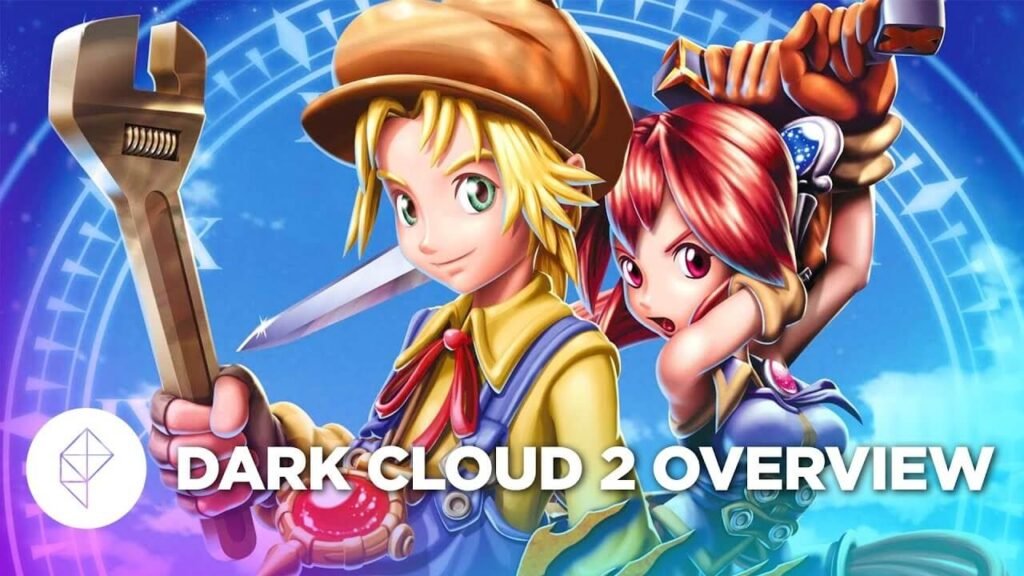Dark Cloud 2, the much-acclaimed sequel to the original Dark Cloud game, has solidified its place as a beloved action RPG among gaming enthusiasts, particularly in the American market where it first captured the imagination of players on the PlayStation 2. The game combines a captivating storyline with engaging gameplay mechanics, creating an experience that resonates with both nostalgic players and new audiences. Featuring the adventures of Max and Monica, Dark Cloud 2’s blend of dungeon crawling, strategic town-building, and real-time combat offers a rich and immersive environment. Indeed, the keyphrase Dark Cloud 2 not only identifies a classic video game but represents a broader exploration of innovative game design that has influenced the RPG genre profoundly.
The Gameplay Mechanics That Set Dark Cloud 2 Apart
At its core, Dark Cloud 2 stands out through its harmonious combination of gameplay elements. Players navigate through intricate dungeons filled with challenging monsters, where strategic combat relies on a mixture of melee, ranged attacks, and special abilities. What makes the gameplay especially compelling is the inclusion of the Georama system — a unique mechanic that allows players to rebuild and customize towns that directly affect the storyline and future game world. This element ties the player’s in-dungeon efforts to the game’s overarching narrative, creating a sense of meaningful progression that is rare in many RPGs.
The combat system, while straightforward, evolves as players advance through the game, requiring more strategy and tactical use of resources. Notably, the duo of characters—Max and Monica—bring distinct fighting styles and abilities to the party, making cooperative gameplay both necessary and engaging. Moreover, as noted by game reviewers, the game blends RPG and action elements seamlessly, making it accessible for newcomers yet challenging for veterans alike.
Story and Characters: A Journey Through Time and Conflict
Dark Cloud 2’s narrative centers on Max, a young protagonist from the city of Palm Brinks, and Monica, a mysterious woman from the future. They join forces to thwart Emperor Griffon, a villain seeking to reshape history by destroying key origins in the past. This temporal conflict adds depth to the traditional RPG storyline, inviting players to explore themes of destiny, sacrifice, and the consequences of war.
As the game progresses, the intertwining of story and gameplay becomes apparent, with each restored town and recruited team member unveiling more about the world’s lore and future ramifications. This storytelling approach results in a richly layered experience that encourages players to invest emotionally in the characters’ journey.
Expert Insights on the Design and Impact of Dark Cloud 2
According to industry veteran Yoshiyuki Higo, the game’s director, “Dark Cloud 2 was designed to push the boundaries of what a traditional RPG could offer by integrating diverse gameplay elements and a dynamic narrative structure. Our goal was to ensure players felt a real connection to the game world, not just through story but by shaping it with their own actions.” This philosophy of immersive and interactive storytelling is evident throughout the game, reflecting a forward-thinking approach to game design that continues to inspire developers today.
In addition, scholarly articles analyzing the evolution of RPG mechanics highlight Dark Cloud 2’s influence on subsequent games that emphasize player agency, narrative depth, and layered gameplay systems. Its success demonstrated that RPGs could successfully blend action, strategy, and role-playing without sacrificing narrative coherence or player engagement.
The Cultural and Technical Legacy of Dark Cloud 2
Beyond its creative gameplay and storytelling, Dark Cloud 2 is notable for its technical achievements on the PlayStation 2 platform. The game’s use of procedurally generated dungeon floors introduced a high degree of replayability, while its polygonal graphics and rich soundtrack enhanced the immersive experience. This combination helped the game maintain critical acclaim years after release, scoring high marks from outlets like IGN and Metacritic.
Moreover, the game’s stylistic design and tonal balance have helped it retain a unique place in gamer culture. Dark Cloud 2’s appeal spans generations, thanks to the nostalgic value it holds for older players and its ongoing availability through digital platforms, including its re-release on PlayStation 4. This continuing access ensures that newer audiences can experience firsthand why Dark Cloud 2 remains a benchmark for quality RPGs.
Conclusion: Why Dark Cloud 2 Remains a Classic in the RPG World
In conclusion, Dark Cloud 2 stands as a shining example of successful game design, combining innovative gameplay mechanics, a compelling storyline, and memorable characters that resonate deeply with players. Its legacy as one of the best RPGs for the PS2 era is underscored by critical acclaim and enduring fan appreciation. By weaving together real-time combat, town-building, and time-travel narratives, Dark Cloud 2 offers an experience that is both entertaining and thought-provoking.
For American gaming audiences and RPG fans worldwide, Dark Cloud 2 remains an essential title that paved the way for future innovations in the genre. Its blend of action, strategy, and storytelling continues to set a high bar, exemplifying how video games can be both interactive art and engaging entertainment. Whether revisiting the game or discovering it anew, players will find in Dark Cloud 2 a rich, dynamic adventure worthy of its acclaim.
you may also like
The Dark Wonderland of Alice McGee Alice: A Captivating Journey into Video Game Artistry
